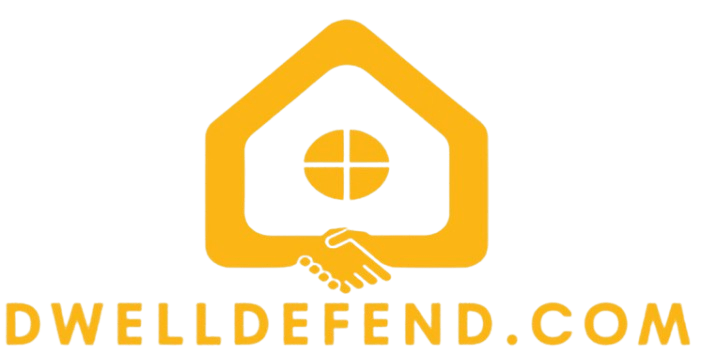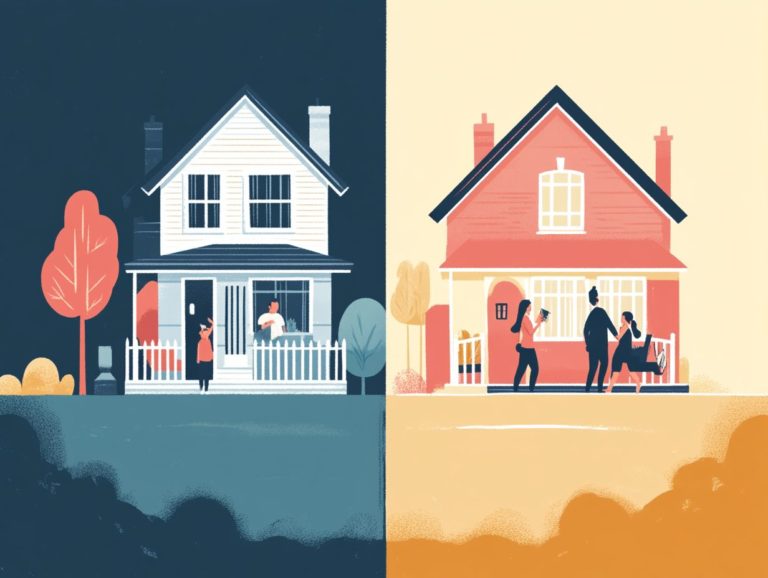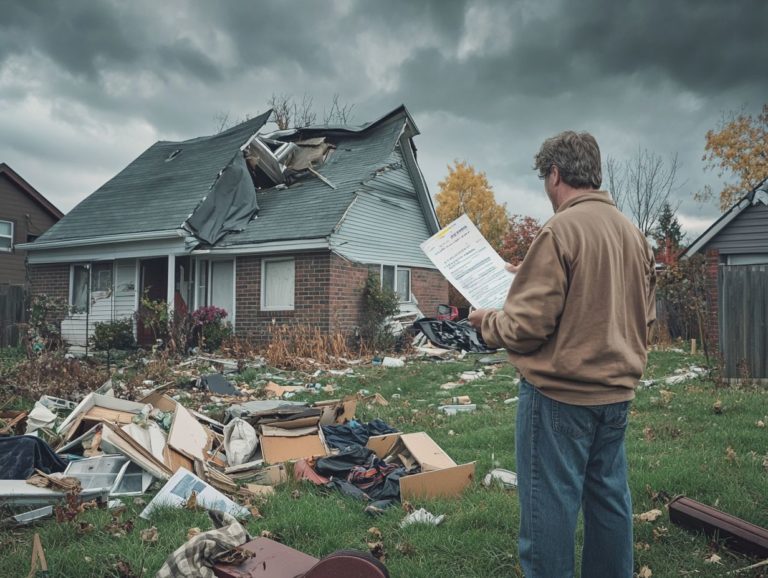What’s Included in Homeowners Association Insurance?
Homeowners Association (HOA) insurance serves as a vital shield for communities, safeguarding shared property while offering essential coverage for liability and damages.
Understanding HOA insurance empowers both board members and residents to make informed decisions regarding their community s protection.
This article delves into the various types of coverage included, the factors that influence insurance costs, and how HOA insurance stacks up against traditional homeowners insurance.
You will also find valuable tips for selecting the right policy, ensuring your community remains thoroughly protected.
Contents
- Key Takeaways:
- Understanding Homeowners Association Insurance
- Coverage Included in HOA Insurance
- Factors Affecting HOA Insurance Costs
- HOA Insurance vs. Homeowners Insurance
- Choosing the Right HOA Insurance
- Frequently Asked Questions
- What s Included in Homeowners Association Insurance?
- Do Homeowners Association Insurance Policies Vary?
- Are Individual Unit Owners Covered Under Homeowners Association Insurance?
- What Types of Common Areas Are Typically Covered by Homeowners Association Insurance?
- Does Homeowners Association Insurance Cover Natural Disasters?
- Can Homeowners Association Insurance Be Customized to Fit Specific Needs?
Key Takeaways:

- HOA insurance provides coverage for common areas and shared facilities in a homeowners association community.
- Property and liability coverage are typically included in HOA insurance, with additional options for coverage depending on the needs of the community.
- Factors like location, risk factors, and property size can affect the cost of HOA insurance.
- It’s important to carefully consider these factors when choosing the right coverage for your community.
Understanding Homeowners Association Insurance
HOA insurance is your community’s financial safety net, whether you’re an HOA member or a condo owner. This insurance offers crucial protection against the various risks tied to shared spaces and common areas.
HOA insurance includes coverage that addresses liability risks, property damage, and legal expenses, all aimed at safeguarding the collective interests of your community.
Understanding insurance premiums helps you make informed decisions regarding HOA fees and special assessments. Knowing the specifics of your HOA’s master policy and its coverage limits can greatly influence property values and maintenance costs within your community.
What is HOA Insurance?
HOA insurance is the policy that homeowners associations acquire to safeguard their community property and shared amenities from various liabilities and property damage.
This coverage protects everyone in your community, featuring crucial elements like a master policy that provides broad protection for communal facilities such as clubhouses, pools, and landscaping.
Typically, this policy includes liability coverage designed to shield you from legal claims stemming from accidents in these shared spaces. It s essential for HOA members to grasp the specifics of the insurance contract, as it outlines the extent of coverage, any exclusions, and responsibilities should damage or injury occur.
By securing HOA insurance, communities can collaboratively tackle risks and boost property values, ensuring that all residents enjoy well-maintained amenities while minimizing financial vulnerability.
Coverage Included in HOA Insurance
HOA insurance covers a wide range of risks for your peace of mind, crafted to safeguard both the association and its members against a variety of challenges.
This protection spans from property damage to liability claims associated with shared spaces and community events, ensuring that everyone is well-protected in the face of unforeseen challenges.
Property Coverage
Property coverage under HOA insurance is essential for safeguarding your community’s common areas think neighborhood parks, pools, and shared amenities shielding them from risks like property damage and insurance claims.
This coverage typically encompasses losses from vandalism, fire, or severe weather events, ensuring the financial stability of the homeowners association.
By addressing these potential financial risks, the HOA can help avoid unexpected assessments, which could come into play if repairs need to be covered out of pocket.
Maintaining these shared spaces is not just about functionality and aesthetic appeal; it s also vital for sustaining property values. When property damage strikes, it can directly impact HOA fees, often resulting in higher costs for residents as funds are redirected toward repairs instead of enhancements. This shift ultimately affects the overall desirability of your neighborhood.
Liability Coverage

Liability coverage in HOA insurance is essential as it safeguards your homeowners association against legal claims from accidents or injuries in shared spaces. This coverage offers vital financial protection against high legal fees.
This coverage includes slips and falls in common areas. It also covers dog bites during community events and damage from community facilities such as pools or playgrounds.
With robust liability coverage, your association can confidently host events, prioritizing everyone s safety while managing property risks.
For example, if a visitor sustains an injury during a neighborhood gathering, liability coverage acts as a protective shield against the potentially crippling costs of a lawsuit.
To further manage these risks, your association should consider implementing:
- Regular safety inspections
- Maintaining clear signage in communal areas
- Encouraging residents to report any hazardous conditions immediately
Extra Coverage Options for HOAs
Additional coverages in HOA insurance might include loss assessment coverage, which protects you from extra fees when damage exceeds the association s main insurance limits. This offers you an extra layer of financial security and peace of mind.
This type of coverage is crucial for individual homeowners. It ensures unexpected costs related to shared property damage like natural disasters or vandalism don t create an overwhelming financial burden.
Special assessments might also arise, addressing specific projects or repairs mandated by the homeowners association that aren t covered under regular maintenance. These added protections significantly enhance standard HOA insurance policies, allowing you to feel more secure in your investment.
It also fosters a stronger sense of community well-being, as everyone is better equipped to contribute to shared responsibilities.
Factors Affecting HOA Insurance Costs
Several factors can greatly influence HOA insurance costs, such as the community’s location, unique risk factors, and the overall size and type of property being insured. Each of these elements plays a crucial role in determining the premiums that homeowners associations are required to pay.
Location and Risk Factors
The location of a homeowners association significantly impacts its insurance costs. Some geographical areas are more susceptible to natural disasters and other risk factors that can inflate insurance premiums.
For example, associations in coastal regions face a heightened vulnerability to hurricanes and tropical storms, making comprehensive coverage against wind, flooding, and related damages essential. Likewise, communities near rivers or lakes encounter considerable flood risks, often necessitating specialized flood insurance.
These environmental threats increase the likelihood of claims and contribute to rising coverage costs. It’s crucial for homeowners associations to remain aware of these geographical challenges, as the financial repercussions can ultimately affect their members.
By thoroughly understanding the risks associated with their location, they can secure the appropriate policies and potentially mitigate premium increases.
Size and Type of Property
The size and type of property governed by a homeowners association play a pivotal role in determining your insurance costs. Larger properties or those with extensive shared amenities often require more comprehensive coverage.
For instance, condo associations typically grapple with higher premiums due to their collective liability insurance, which safeguards communal areas and shared facilities like pools or fitness centers. Conversely, if you reside in a single-family home neighborhood, your insurance demands might be lower since individual homeowners are accountable for their own policies, concentrating on personal property and liability.
This distinction highlights how a higher density of shared responsibilities can lead to increased insurance rates, impacting your overall financial planning. By grasping these nuances, you can make well-informed decisions about your insurance needs, whether you’re a prospective buyer or a current homeowner.
Understanding these aspects of HOA insurance can make a big difference. Secure the right coverage today to protect your community!
HOA Insurance vs. Homeowners Insurance

HOA insurance and homeowners insurance may share a few similarities, but they serve distinct purposes and offer different types of coverage.
It’s crucial for community members to understand these differences to ensure they have the right protection for their needs.
Differences and Overlapping Coverage
The key differences between HOA insurance and homeowners insurance lie in the scope of coverage and specific liabilities each policy addresses. As a homeowner, carefully consider the overlapping areas.
Understanding how these two types of insurance interact is vital for anyone residing within a community governed by a homeowners association. For example, while HOA insurance typically covers common areas such as pools, landscaping, and exterior damage to buildings, your homeowners insurance generally protects your individual property against theft, accidents, or personal liability.
Pay close attention to what your personal policy includes, particularly regarding personal property and any improvements you’ve made to your unit.
To ensure you have comprehensive coverage, regularly review both policies, consider adding supplementary coverage for your personal items, and communicate with your HOA to clarify what is and isn t included. This proactive approach helps close coverage gaps and gives you peace of mind.
Choosing the Right HOA Insurance
Selecting the appropriate HOA insurance is crucial for homeowners associations. It demands a careful look at your community’s insurance needs, potential liability risks, and the various coverage options available.
Thinking carefully about your needs helps make sure all financial responsibilities are covered.
Considerations and Tips for Selecting Coverage
When selecting HOA insurance coverage, consider a variety of factors. Think about your community’s unique insurance needs and the specific types of coverage required. Don’t hesitate to ask insurance experts for help to ensure you have adequate financial protection.
Understanding the specific risks that may impact your community like weather-related damages or liability issues tied to shared spaces is essential. By evaluating different insurance options, you can identify policies that provide the best value while meeting regulatory requirements.
Engaging with knowledgeable insurance professionals offers invaluable insights and tailored recommendations that align with your community’s distinct characteristics. This ensures you check for any coverage gaps.
Ultimately, making informed choices will enhance your community’s resilience against unforeseen events and foster peace of mind for all residents involved.
Frequently Asked Questions
What s Included in Homeowners Association Insurance?

Homeowners Association Insurance typically includes coverage for common areas, buildings, and liability protection for the association.
Do Homeowners Association Insurance Policies Vary?
Yes, the coverage included in Homeowners Association Insurance policies can vary depending on the specific needs of the association.
Are Individual Unit Owners Covered Under Homeowners Association Insurance?
No, individual unit owners are typically responsible for insuring their own personal property and liability. Homeowners Association Insurance covers common areas and buildings.
What Types of Common Areas Are Typically Covered by Homeowners Association Insurance?
Common areas like hallways, pools, and playgrounds are usually covered by Homeowners Association Insurance.
Does Homeowners Association Insurance Cover Natural Disasters?
Yes, most Homeowners Association Insurance policies include coverage for natural disasters such as hurricanes, earthquakes, and wildfires.
Can Homeowners Association Insurance Be Customized to Fit Specific Needs?
Yes, Homeowners Association Insurance can be tailored to fit the specific needs of an association. Additional coverage can be added for events, directors and officers liability, and equipment breakdown.
Don’t wait! Act now to protect your community.





